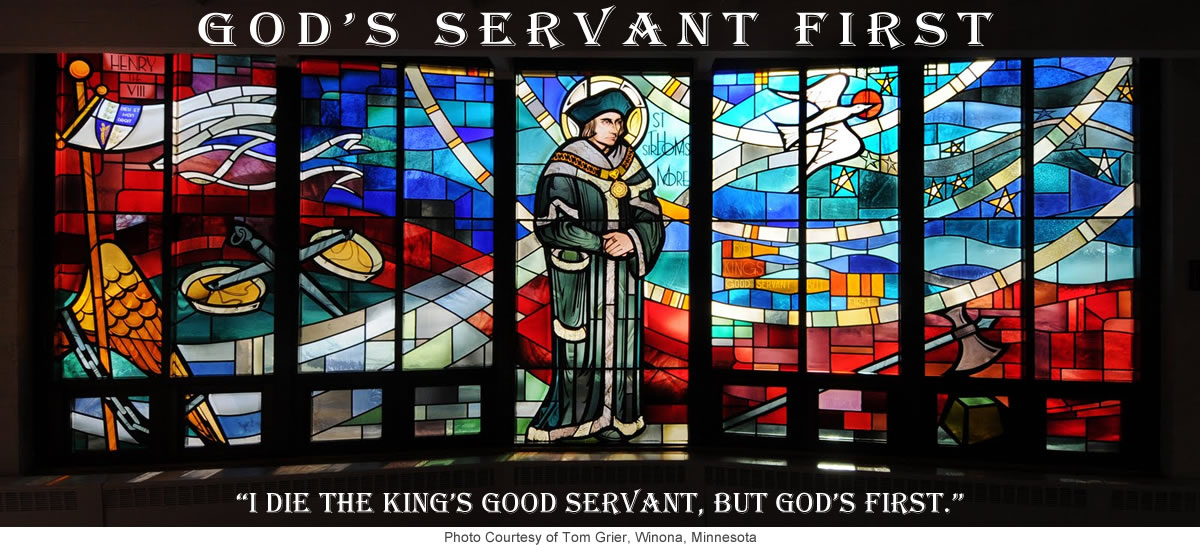In 1520 English grammarian Robert Whittington wrote that Thomas More was “a man of marvelous mirth and pastimes, and sometime of as sad gravity. A man for all seasons.”
Whittington’s description is apt, for More was a complex man living in complex times. He was a man of deep faith and tradition, yet a proponent of the “New Learning” of the Renaissance. He was a loyal statesman, yet an outspoken opponent of his King’s Protestantism. He was a contemplative and an ascetic, yet a devoted husband and father to several children.
His complexity continues into the present day, as he is venerated by both Catholics and communists alike.
More was born on February 7, 1478 in London. He was a student at a prestigious school and worked as a page to the Archbishop of Canterbury, eventually making his way to the University of Oxford, where he received a classical education.
Despite his social connections and intellectual abilities, More was drawn to the contemplative life. He considered becoming a monk and spent time as a postulant at the Carthusian charterhouse in London. He left the monastery—some have speculated that he was expelled—to live the life of a layman, though he continued certain ascetical practices, such as wearing a hair shirt, for the duration of his life.
More had three daughters and a son with his first wife, who died about six years into the marriage. More married again only thirty days after his wife’s death, a decision the Church allowed because of More’s good character and reputation. He had no children with his second wife, but he did raise a step-daughter from his second wife’s previous marriage. He also became a guardian to a young girl who eventually married his son. He was known as a loving father who emphasized the importance of writing and education, even with respect to his daughters, which was uncommon at the time.
As a lawyer, More had a successful career in politics, serving as a member of Parliament and in various other administrative capacities. He was knighted in 1521, elected as Speaker of the House of Commons in 1523, and became Chancellor in 1525. He also worked as a secretary and personal advisor to King Henry VIII.
More was a scholar who published several religious polemics, but his most famous work was Utopia, which has become a classic of English Renaissance literature. Written in Latin, Utopia describes a fictional island that exists as a social paradise, in contrast to the disorder More saw in Europe.
A zealous Catholic, More was a fierce opponent of Martin Luther and the Protestant Reformation, and he took efforts to suppress Protestant literature and investigate religious subversives. He denied accusations that he tortured heretics, except in two known cases of corporal punishment, but he did approve of executing religious dissidents, a common practice among both Catholics and Protestants of the time. His actions against Protestants remain a matter of debate to this day, with some accusing him of cruel and inhumane treatment, and others noting that he acted in accordance with his duties as a public servant during a tumultuous time.
More was executed for treason on July 6, 1535. His opposition to King Henry’s divorce of Catherine of Aragon and subsequent marriage to Anne Boleyn remain well known, as does his loyalty to the pope and his refusal to recognize the king as the Supreme Head of the Church of England.
The Catholic Church recognizes Thomas More as a martyr, as does—surprisingly—the Church of England, which speaks further to the complexity of the man and the time in which he lived. Pope Pius XI canonized More in 1935, and in 2000 Pope St. John Paul II declared More the “heavenly Patron of Statesmen and Politicians.”
St. Thomas More, pray for us!
